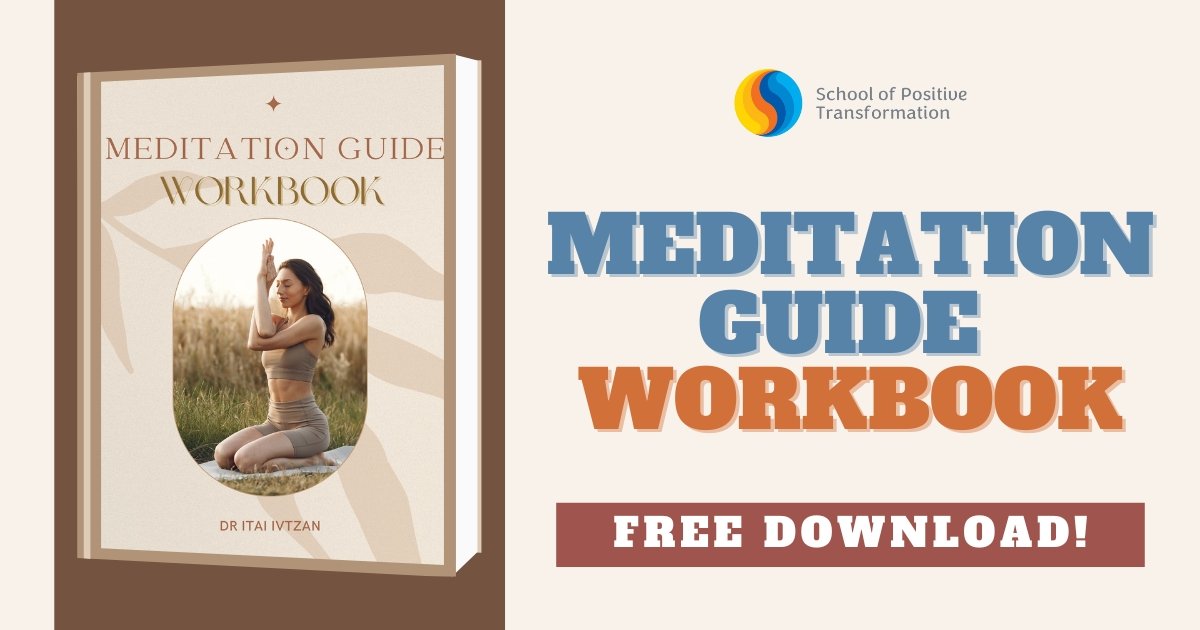How to practice mindfulness to reduce chronic pain
When we practice mindfulness, we’re practicing the art of creating space for ourselves—space to think, space to breathe, space between ourselves and our reactions. In recent years, awareness of the concept of mindfulness has increased. It has been used to manage stress, improve focus, and has made its way into the classroom, the boardroom, and the hospital. John Kabat-Zinn, a leader in mindfulness practice, defines mindfulness as, “awareness that arises through paying attention, on purpose, in the present moment, non-judgmentally.” Whilst it is reasonably well known that the practice of mindfulness has been proven to be effective in the treatment of stress, anxiety, depression, and other mental disorders, there have also been extensive studies on the effectiveness of its use against chronic pain.
But before you continue you might like to consider our free worksheet on exploring “Meditation Guide”. Please download this worksheet here.
A common question is, “Does mindfulness really help to reduce the pain or simply help me to handle it better?” Both is the answer! It may be important to note at this point that there are two different types of pain. Systemic pain has a definite cause and serves a definite purpose. It comes to warn us of danger to our bodies. A knife cut will be very painful because it tells us that we have to do something about it immediately. A broken bone will be painful. Diseases can cause pain, indicating treatment is necessary. But chronic pain lingers as it constantly alerts the brain yet doesn’t stop. The pain we feel is a combination of physical, mental, and emotional factors, and it seems that mindfulness can help us treat it. Mindfulness can be somewhat effective against systemic pain in so much as it can help eliminate the mental and emotional factors involved. There are also many circumstances when mindfulness can eliminate chronic pain.
The American Academy of Pain Management tells us that there are almost 100 million Americans suffering from chronic pain. This makes it the most expensive, most pervasive, and most debilitating health problem in the country. The most common solution to the problem of chronic pain has been the use of opioids. These, of course, come with their own sets of difficulties such as side-effects and addiction. The most common chronic pain condition involves the lower back and this is followed by migraine and headache, neck pain, and facial pain. Increasing evidence suggests that the practice of mindfulness can be beneficial in the fight against this pain. In 2015, Fadeeek Zeidan Ph.D. and his colleagues established that after applying the principles of mindfulness training, the brains of participants in the study showed far less activity in the areas responsible for processing pain messages. The results of the study were very promising as, whilst not universal, it was shown that daily mindfulness exercises allowed many participants to reduce, or even eliminate, their reliance on pain medications.
The reason that daily mindfulness practice can be helpful for people dealing with chronic pain issues is that there are often negative or worrisome thoughts about the pain, which only serves to increase the discomfort. Most of us equate pain with suffering, but this is not completely true. Real suffering is pain combined with worry. There are lots of times we experience pain without suffering. Think about getting a tattoo. Or having a baby. Pain, yes. Suffering? Probably not. So, our experience is mitigated by the emotions we feel, or don’t feel. Mindfulness helps us to relax by noticing our breathing and other sensations just as they are. This in turn can help manage pain and reduces the anxiety and stress that generally make matters worse. There are lots of ways for you to become acquainted with mindfulness techniques. Explore! There is an ever-increasing number of books and CD’s available on the subject. You can find apps for your smartphone or your tablet and even find videos on YouTube. You may choose to visit a qualified mindfulness trainer to learn the techniques or see a psychologist or psychotherapist. If you are someone who prefers a group setting, check out the offerings at your local community center. You can often find group sessions guided by a qualified practitioner. There are many avenues you can pursue due to the growing popularity of mindfulness meditation.
Interestingly, researchers at Wake Forest Baptist Medical Center have found that the brains of people utilizing mindfulness meditation techniques experience pain differently than those who do not. Pain is a multidimensional experience. At a basic level, we feel the sensation of pain. By definition, it hurts, so we judge it as bad. Once we make such a judgment, we add to its negative effects. This negative judgment inflates the pain’s effects, making it far worse than its simple, initial sensory effect. How often have we been told that the more we think about it the worse it gets? Well, this turns out to be very true. Mindfulness enables us to experience the initial pain without the subsequent negative judgment. We deal with it strictly on a sensory level. By removing any of the emotional baggage which accompanies such judgment we avoid it causing such negative effects as depression and anxiety. Mindfulness takes us back to basics, so to speak. When we become aware of just what we are feeling, without all the extraneous effects of negative feelings, the physical perception of the pain is reduced. Kabat-Zinn tells us, “From the perspective of mindfulness, nothing needs fixing. Nothing needs to be forced to stop, or change, or go away.” He tells us that only awareness of the basic physical sensations of pain, of the neutrality of its condition, neither good nor bad, can rid us of the negativity provided by the emotional inflammation. The agitations of thoughts that result from our judgments only serve to amplify our experience of pain.

With the advent of modern brain imaging techniques, there has been much evidence to support the theory that mindfulness meditation can be beneficial in alleviating chronic pain. In 2011 there was a study conducted, using MRI, to explore the brain mechanisms involved in the relationship of mindfulness to pain management. This study showed that while there was increased activity in the area of the brain involved processing the sensory experience of physical pain, there was a corresponding decrease in activity in brain locales that are responsible for emotional response, memory, and appraisal. This means that although practitioners of mindfulness are fully aware of the actual physical aspects of pain, they make no judgment about it emotionally, nor do they appraise its strength or commit the experience to memory. It is also interesting to note that the study was not conducted while the participants were practicing mindfulness. Another study in 2015 seemed to confirm the result of the previous one, with the added effect of confirming that the effect of mindfulness goes above and beyond the so-called placebo effect. This means that it is not simply the power of suggestion acting as the mechanism of pain relief. The study also offered evidence of decreased activity in the area of the brain called the thalamus, indicating the inability of information from sensory input to reach areas of the brain associated with thinking and evaluation.
It may, therefore, be helpful to train yourself on how to feel your body, how to experience the sensations, and how to process them. You may not be in pain at this moment so it is good to experience your body in its normal state. It’s very easy to perform a full-body scan, and to do it well will require only thirty to forty minutes. First, get comfortable. You can choose to lie down or simply sit in a comfortable chair. Relax. If you wish to reduce outside visual stimuli you can choose to close your eyes, it’s your choice. You may simply choose to relax the lids a little, leaving them half-open. Next, start to become aware of your breathing, of the air moving in and out of your lungs, Listen to its gentle rhythm. Be aware of everything which your body is touching, that may be the softness of the chair you’re sitting in, the feel of the blanket on your bed. Whatever it is, just be aware of it. When you are relaxed and ready, begin your scan. Start anywhere you like. Some people like to perform a methodical scan from head to toe, or vice versa. Others may develop their own pattern, while some do it completely randomly. As you advance, observe the sensations you are feeling. Tingling? Buzzing? Warmth? Investigate every sensation with curiosity and acceptance. Be open to everything. You will almost certainly notice your attention drifting to something else from time to time. This is only natural. When it happens, gently refocus your attention back to your scan, don’t force anything. As you practice more and more, you will notice that the drifting becomes less frequent. As you finish your body scan, return to feeling your entire body, and the way the air feels as it enters and exits the lungs. Relax for a moment before you open your eyes and return to the world. Such a full body scan will give you a baseline, something to use as a barometer for the times when you do experience pain.
As you can see, practice mindfulness has been shown to alleviate pain without the use of dangerous medications. The only side effects may be deeper contentment with life in general and a renewed sense of wellbeing. And, as for the possible addiction to mindfulness, well, what’s the downside of that?
Ready to manage pain through mindfulness and reconnect with your body? Download our ‘Meditation Guide Workbook’ to learn practical techniques that help reduce chronic pain and restore your sense of wellbeing.






